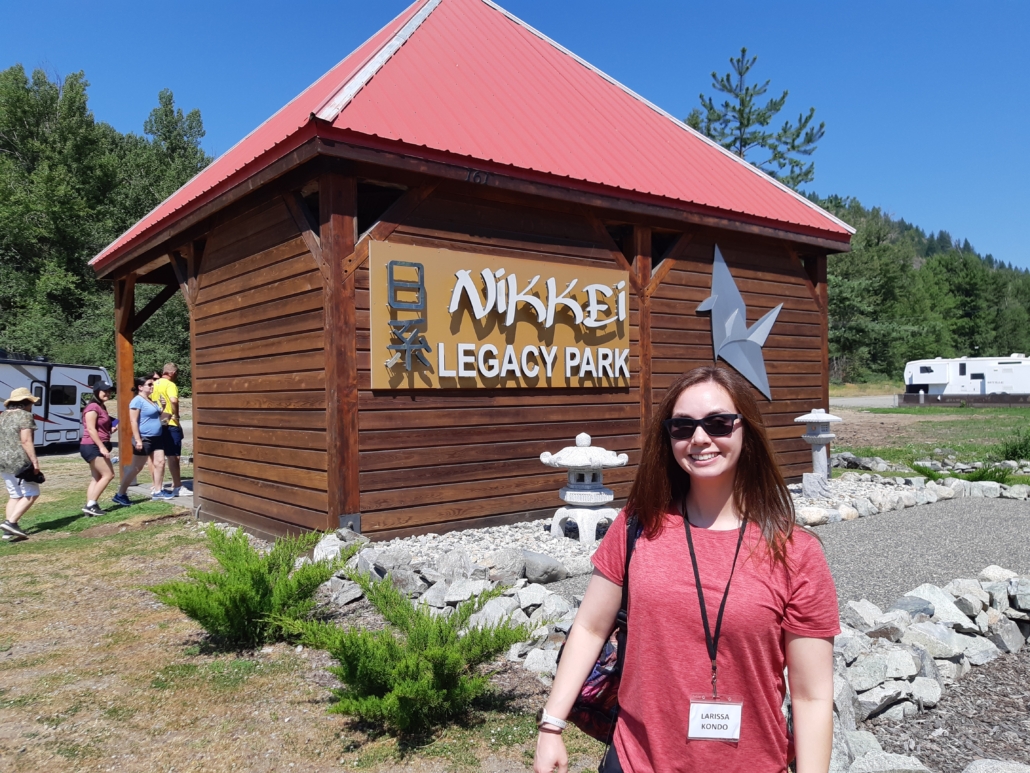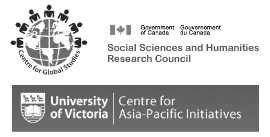Larissa Kondo’s Journey to Preserve The New Canadian

Larissa Kondo, a fourth-generation Japanese Canadian, launched the petition to preserve public access to The New Canadian—a historic newspaper documenting the experiences of Japanese Canadians during and after World War II –after she attended the Past Wrongs, Future Choices (PWFC) field school. Since launching her petition to preserve the online archive, which has garnered 4,711 signatures as of October 8, 2024 (trying to reach 5000), Larissa has been driven by a deep connection to her family’s history and a sense of responsibility to ensure this valuable resource isn’t lost.
“I’m a fourth-generation Japanese Canadian—my grandfather was born here, and his parents arrived in Canada as teenagers. But on my grandmother’s side, I’m third-generation because she came here herself. So, depending on how you look at it, I’m either third or fourth generation. Either way, my family has been here for a long time.”
Larissa’s connection to The New Canadian is intertwined with her family’s story. Her grandfather, along with his brother, sisters, and mother, were interned during World War II.
“My grandfather and his family were interned, but his father had already passed away. He and his brother resisted being sent to road camps because they didn’t want to be separated from their family or work for cheap labor. They were sent to Angler instead. Eventually, they signed paperwork to be released and were sent to different jobs in Ontario.”
Though Larissa had long known her grandfather was interned, she didn’t learn the full extent of his experience until after his death.
“Growing up, I knew he had been interned, but he never really talked about it. It wasn’t until much later that I found out they were sent to Angler, which carried a bit of a stigma. Being sent there meant you were considered ‘trouble,’ or ‘bad,’ and I wonder if he felt some shame about it. I always wonder if that’s why he didn’t want to talk about it much.”
The subject of her grandfather’s internment was approached cautiously within her family. “He told me a couple of stories, but there was always this feeling that it was something painful or shameful, something he didn’t want to revisit.”
Revisiting the Past: The Bus Tour Experience
Recently, Larissa participated in the bus tour and field school to deepen her understanding of this chapter in Canadian history.
“I was on the bus tour because I worked for the Japanese Canadian Legacies Society on a teacher course about Japanese Canadian history. I’d always wanted to go on this kind of tour, so when the opportunity came up, I jumped at it.”
This wasn’t Larissa’s first visit to internment sites, but the experience was different this time.
“My family took a road trip to some of these places back in 2021, but this time was different. Being with people whose families had lived through the camps made the experience much more meaningful.”
One moment that stood out to her was seeing how people reacted to taking photos at these sites.
“When I visited with my family, we didn’t know what to do with ourselves in photos—do we smile? It felt awkward. But on this trip, seeing people whose parents grew up in the camps smiling in their photos was eye-opening. For them, these weren’t just prison camps; they were also places where their parents had childhood memories, like playing baseball or sledding in the winter. It really reminded me how complicated these experiences were.”
Advocating for The New Canadian
Beyond the bus tour, Larissa has taken on the mission of advocating for The New Canadian. When she first heard that Simon Fraser University (SFU) was planning to take down the online archive due to a lack of financial support, she knew she had to act.
“I overheard Jordan mention it on the first day of the field school. I thought, ‘We can’t lose this.’ So I started talking to others about it and eventually launched the petition to raise awareness.”
One of the challenges Larissa faced was deciding whether to focus her efforts on saving The New Canadian specifically or advocating for all of the 29 historical materials at risk of being taken down.
“I struggled with that decision. I wondered, should I fight for all the papers or just The New Canadian? But in the end, I decided to focus on what I knew best. The New Canadian is unique—it’s the only paper that provides a first-hand perspective on the internment from the Japanese Canadian community.”
For Larissa, the value of The New Canadian goes far beyond news articles.
“It’s the advertisements, the personal stories, the community announcements that give you a glimpse into the everyday lives of Japanese Canadians during such a turbulent time.”
One of the aspects that fascinates her the most is the wartime advertisements.
“I love the war bond ads,” she says with a wry smile. “They talk about ‘investing in freedom’ to people who had just been imprisoned and had their freedom taken away. The contradiction is staggering.”
Another part of the paper that stands out to Larissa is the small, often overlooked columns.
“There were tiny notes about how people had to surrender their pets before being interned—‘rehome or destroy.’ It’s heartbreaking. Imagine you’ve lost everything—your job, your house, your car, your community—and now you have to give up or kill your pets. That’s something you wouldn’t see in The Vancouver Sun. Those little human details are what make The New Canadian so important.”
Looking Forward: Continuing the Fight
Thanks to Larissa’s petition and public support, SFU has extended the hosting of The New Canadian archive until November, but its long-term future remains uncertain.
“In an ideal world, the Multicultural History Society of Ontario (MHSO) would have the funding to host all the materials. But if that isn’t possible at the moment, I hope another organization can take up the cause in the meantime.”
For now, Larissa is focused on keeping the momentum going.
“The longer we can keep it online, the more time we have to find a permanent solution. The response from the community has been incredible, and I’m hopeful we can find a way to preserve it.”
This article was written by Ciel Dong, based on an interview with Larissa Kondo, in September 2024.

 Instagram
Instagram